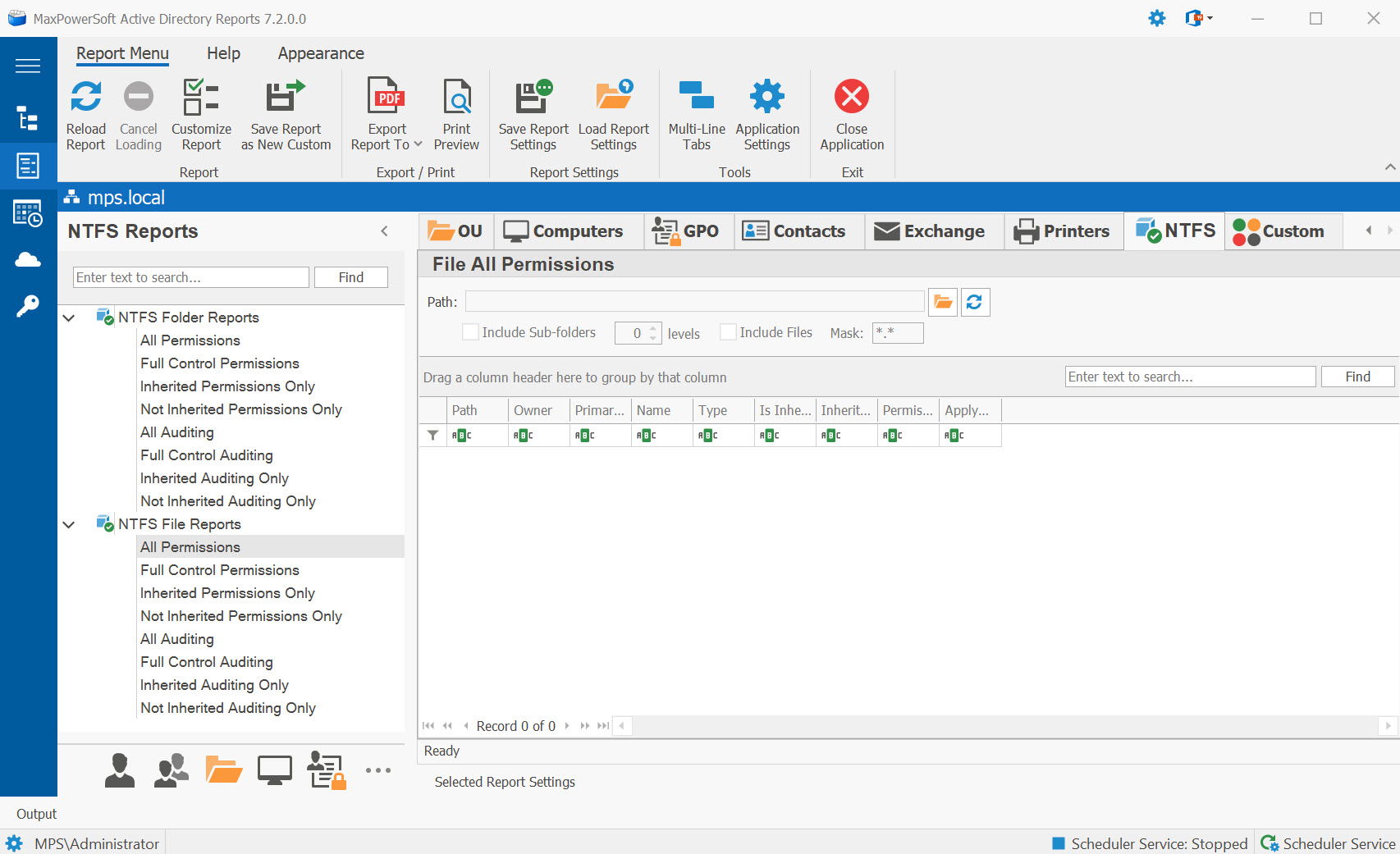NTFS File Permission Reports
NTFS file permissions provide granular control over access to individual files on Windows file systems. NTFS file permission reports enable administrators to audit and manage access control at the file level, ensuring proper security and compliance for sensitive documents and critical data files.
These reports are crucial for regulatory compliance, data loss prevention, intellectual property protection, and forensic analysis. File-level permission auditing helps administrators identify inappropriate access, detect security violations, track data access patterns, and maintain detailed audit trails for sensitive information. Regular file permission audits are essential for maintaining data security and meeting compliance requirements such as HIPAA, SOX, GDPR, and PCI-DSS.
NTFS File Permission Reports
The NTFS File Permission Reports section provides detailed reports for auditing and managing file-level access permissions on Windows file systems. These reports help track permission assignments, inheritance settings, and audit configurations for individual files. All reports support custom path specifications, file filtering options, and various analysis capabilities for targeted permission review.

All Permissions Report
The "All Permissions" report provides a comprehensive view of all NTFS permissions assigned to specified files, including both directly assigned and inherited permissions. This report displays the complete access control list (ACL) showing users, groups, permission types, and whether permissions are inherited from parent folders or explicitly set on the file.
Full Control Permissions Report
The "Full Control Permissions" report identifies all users and groups that have Full Control permissions on the specified files. Full Control grants complete authority over files, including the ability to read, write, modify, delete, change permissions, and take ownership. This report is critical for security audits and identifying privileged file access.
Inherited Permissions Only Report
The "Inherited Permissions Only" report shows permissions that files inherit from their parent folders rather than having directly assigned. This report helps administrators understand how folder-level permissions propagate to files and identify which file permissions are controlled by parent folder settings.
Not Inherited Permissions Only Report
The "Not Inherited Permissions Only" report identifies permissions that are explicitly assigned directly to files, breaking inheritance from parent folders. These explicit file-level permissions override inherited settings and are important for understanding custom access configurations and permission exceptions applied to specific files.
All Auditing Report
The "All Auditing" report displays all auditing configurations (SACL - System Access Control List) for the specified files, showing which file access attempts are being monitored and logged. This includes both success and failure audit entries, helping administrators track and monitor file access for security, compliance, and forensic purposes.
Full Control Auditing Report
The "Full Control Auditing" report identifies audit settings specifically configured to monitor Full Control access attempts on files. This report helps track who is attempting to exercise complete control over sensitive files, which is crucial for security monitoring, compliance auditing, and detecting potential data theft or privilege abuse.
Inherited Auditing Only Report
The "Inherited Auditing Only" report shows audit settings that files inherit from parent folders. Understanding inherited file audit settings helps administrators ensure consistent monitoring policies across the file system and identify gaps in file-level audit coverage.
Not Inherited Auditing Only Report
The "Not Inherited Auditing Only" report displays audit settings that are explicitly configured on individual files, separate from parent folder audit policies. These custom file-level audit configurations represent specific monitoring requirements for particular files and are important for targeted security auditing of sensitive documents.